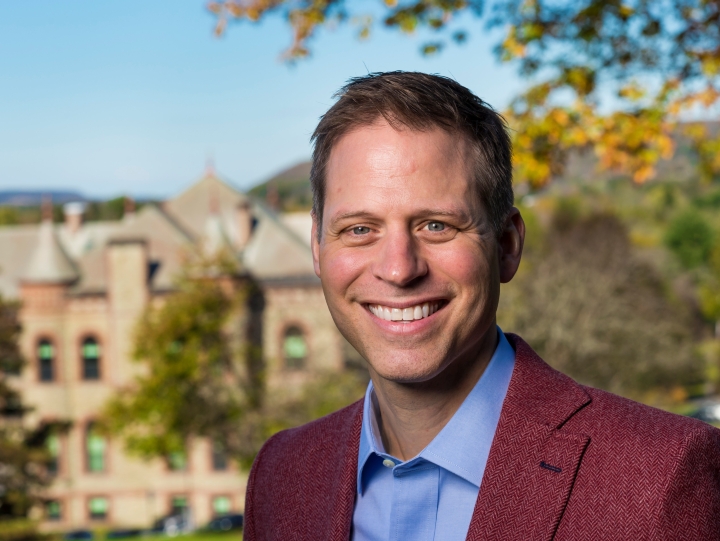
The Complex Housing Selection Process
Student Success Supporting the Profession Equity, Inclusion and Social Justice AVP or "Number Two" Senior Level VP for Student Affairs
March 14, 2024
Colgate has a four-year residency requirement, and like many residential colleges and universities, our housing selection processes for the upcoming academic year occur at this time each spring semester. On our campus, upper-level students form rooming groups and are then assigned a specific time to select from available rooms as individuals or as a group, according to a randomized lottery. This process is designed to be transparent and equitable for students, and yet each year the process seems to grow more complex and leave more students confused and dissatisfied with the outcome.
Some additional context may be helpful to explain the dissatisfaction. Our housing inventory is diverse, ranging from new, modern residence halls to historic-registry era houses, fraternity and sorority chapter houses, traditional residence halls, apartments, and large townhouses. There are 625 unique room typologies in our inventory of approximately 3,000 beds! Each year, an increasing number of students request single rooms from a small inventory of singles. Ironically, the variety of housing options combined with a small and finite number of singles has resulted in many students feeling frustrated that they didn’t receive their preferred housing type.
How did we get to this place? Is the student frustration a result of more students coming to Colgate having never shared a bedroom? Or, are we responsible for creating the challenges we’re now experiencing in our attempts to build a more inclusive selection process? I have been giving a lot of thought recently about how our commitment to inclusivity may be resulting in more students feeling excluded by the office of residential life.
The number of students who need housing accommodations due to documented disabilities has also grown every year, resulting in an increasing number of rooms and rooming groups being housed outside of, and ahead of, the regular lottery process. Relatedly, we must assign appropriate housing for students with emotional support animals. For the past two years, we have also included opportunities for students to identify specific religious, gender, or gender-identity needs for their inclusive housing (e.g. access to a private bathroom, kitchen, a single-gendered floor, and/or a single-gender bathroom).
Merriam Webster’s dictionary defines equity as “freedom from bias or favoritism” and ‘equitable’ as “dealing fairly and equally with all concerned.” We have also come to operationalize equity in our practice as providing each student with what they need to succeed (equity) even if that may not be the same as what we provide to all students (equality). This guiding practice works well when there is sufficient supply and when you’re able to meet all students’ needs for success. Providing reasonable, equitable housing accommodations is also uncontestable when it is required under the ADA or Fair Housing Act. But, what happens when we ask for students’ religious or gender-specific considerations but cannot always meet them within our housing inventory? A recent example of this limitation is from a student who wakes early each morning for prayer and is requesting a single room so as not to disturb a roommate.
All of this leaves me with a few related questions:
-
How do we create a housing selection process that is transparent, fair, impartial, and random, and that also houses some students according to what may be preferences (vs. reasonable accommodations that are required by law)?
-
What happens when some students believe that the process we have developed benefits those who submit a specific request for a housing assignment that others view as a preference?
-
Have we created a process where we are inviting more personalized requests and special considerations within a process that was originally designed to run according to a randomized lottery process? Or, is it also possible that the nature and degree of students’ actual needs have become more evident and no longer call for a randomized process?
I realize I am asking more questions in this blog post than providing solutions. Of course, universal design is the easiest solution to many of the questions I have raised; however, it will take historic campuses like Colgate many years of renovations to achieve this standard. We are on our way to realizing greater accessibility. As part of Colgate’s Third Century, we recently announced an extensive renovation of our upper-level student housing, called the Lower Campus Plan. The multi-year project will begin this upcoming summer and I couldn’t be more excited about the transformations and enhancements it will bring to Colgate’s student experience for future generations.
But, until we complete these renovations with universal design standards and with more singles, should we stop signaling to our current students that we will consider housing accommodations that are not required by law? By inviting these considerations, are we setting them up for disappointment when we cannot meet their requests while also signaling to other students that our randomized, impartial process is replete with exceptions? Are we inviting more students each year to submit housing requests with special considerations? Alternatively, are we sending an important signal of inclusion while demonstrating for students and their families what equity actually means in practice?
Interestingly, inviting special housing considerations has led to some disagreements among my colleagues about which type of adjustments we should prioritize (beyond those required by law). For instance, are a student’s gender-related needs more important than one’s religious practices when there is only one room available to assign?
I welcome your thoughts on these complex questions. Perhaps I am missing the obvious answer to these thorny questions. Or, maybe you and your colleagues are struggling with a similar or related issue and have some insights you’re willing to share. Either way, what I hope this post illustrates is that some of our decisions come with competing interests, making the “right” answer elusive. I believe these kinds of questions benefit from talking with others, sharing successes and challenges, and relying on the strong network of colleagues that NASPA has assembled through our association. Your feedback is welcome!
You can reach me at [email protected]

Paul J. McLoughlin II serves as the vice president and dean of the college at Colgate University and is a member of the NASPA James E. Scott Academy Board.